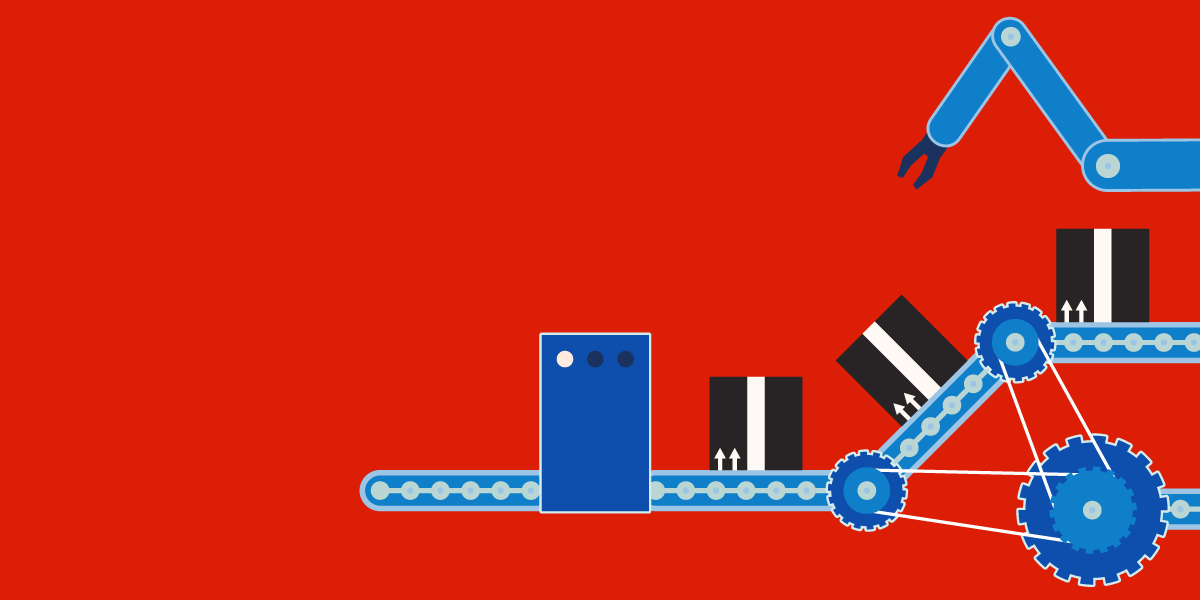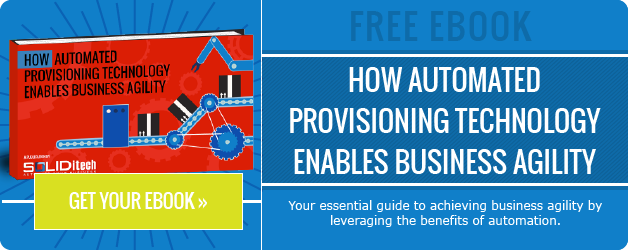"Provisioning" specifically refers to the act of setting up or configuring the necessary hardware and software to activate a customer's purchased services. Automating that process results in, amongst other benefits: increased business agility and minimised revenue leakage.
Rather than relying on time consuming and error-prone manual processes, changes to an account’s status are propagated to remote systems instantly; without timely human errors or process-breakdown delays.
In our recently published eBook “How Automated Provisioning Technology Enables Business Agility” we detail 9 ways in which Automated Provisioning supports operations through software, technology and architecture.
In this post, we’ve detailed 3 of those benefits:
1. One Single, Connected Platform

Instead of a manual process driven by people, paperwork and/or disconnected software and product catalogue systems, you have one single and connected platform that manages everything.
‘Everything’ means that Sales is connected to Provisioning, which is inherently connected to Billing, etc. And every department works off of the same database. So a change made within Sales (an upgrade, for example) is immediately propagated through to Provisioning; workflows automatically ensure that all services are properly activated, in order and as per the customer order - and the customer is invoiced accordingly.
A single, connected business is significantly easier to manage and maintain. Not to mention more efficient. Furthermore, where significant time and resources were spent on maintenance and hole-plugging, these are now spent on innovation and value-adding IT services.
2. Scalable
If your workforce is already working at capacity, it is very difficult (read: almost impossible) to add additional load without process breakdown. You could always hire more people, but there are significant costs attributable to recruitment, salary and training.
In the same way, you can only overload unstable software connections so much before they begin to fail.
Bottom line: Manual processes or those run through disconnected software are not easily scalable.
Automated Provisioning run by predefined workflows are very easily scalable. Instead of adding people to your processes, you simply beef up your IT infrastructure to cope with the new workload. Adding to your technical capacity is both easier and cheaper. Software is able to perform multiple tasks simultaneously, enabling a far more scalable operation.
3. Reduces Errors & Revenue Leakage

For an ISP, business systems that are out of sync with service platforms are the most common cause of errors and the subsequent revenue leakage.
Processes are incomplete or completed incorrectly. This means services are not activated or terminated/suspended correctly with the result that your customers are billed for services they haven’t received, or worse, are not billed for services they have received.
Reducing these errors and ensuring an end-to-end connection between Sales, Provisioning and Billing is essential to minimising revenue leakage, and ensures completeness of billing. Automated business processes, and specifically, Automated Provisioning does exactly that.
Summary
For the hole-plugging IT expert constantly managing the same recurring problems in an overly-complex environment, Automated Provisioning is the key to creating an agile framework to support an agile business through technology, architecture and software.
It creates a connected operational process environment, managed by a single piece of software. Automation ensures consistency, scalability, speed, stability and simplicity - all factors essential to a successful IT Infrastructure.







![What is Provisioning? [In less than 100 words]](https://blog.soliditech.com/hubfs/what-is-provisioning---UPDATED.png)
Comment